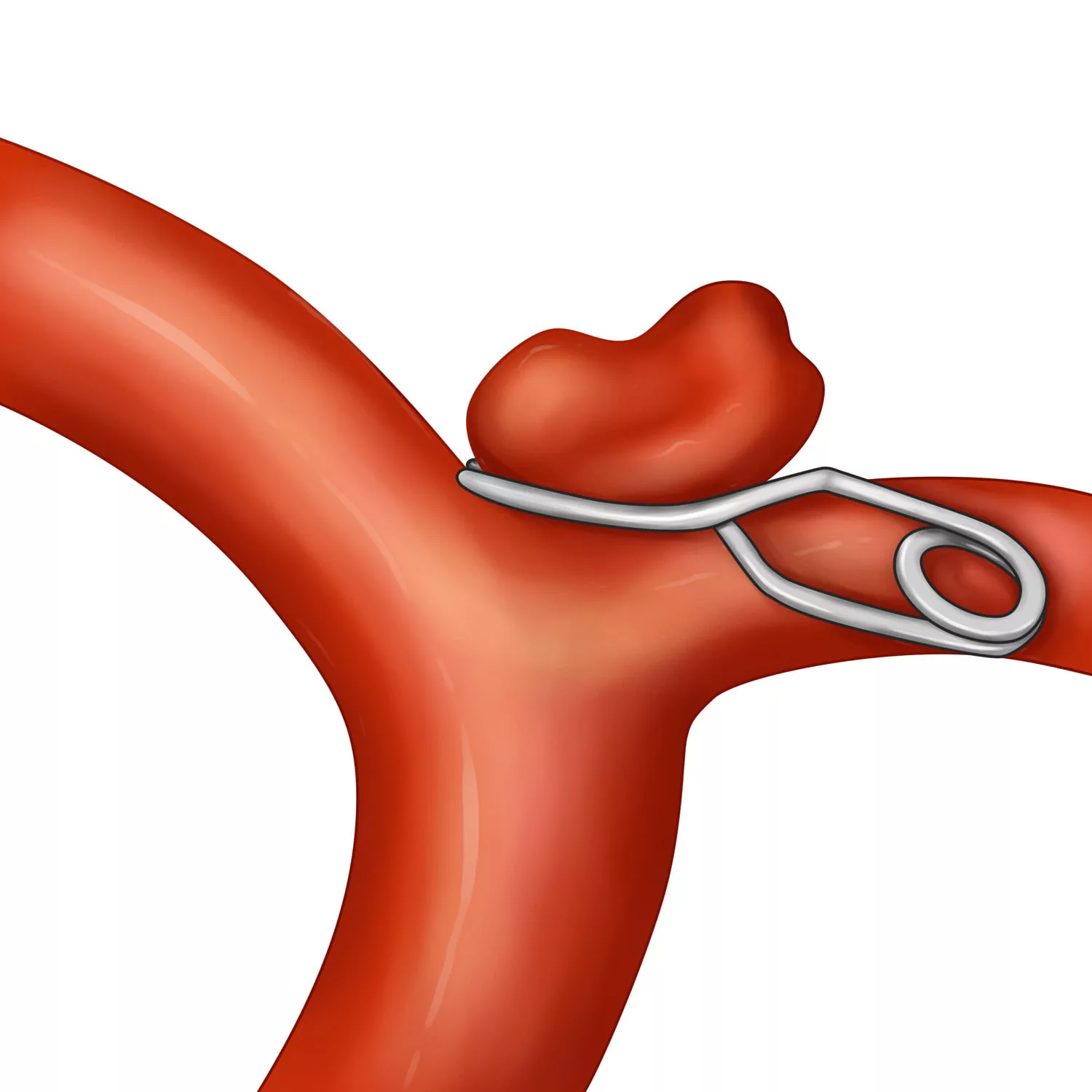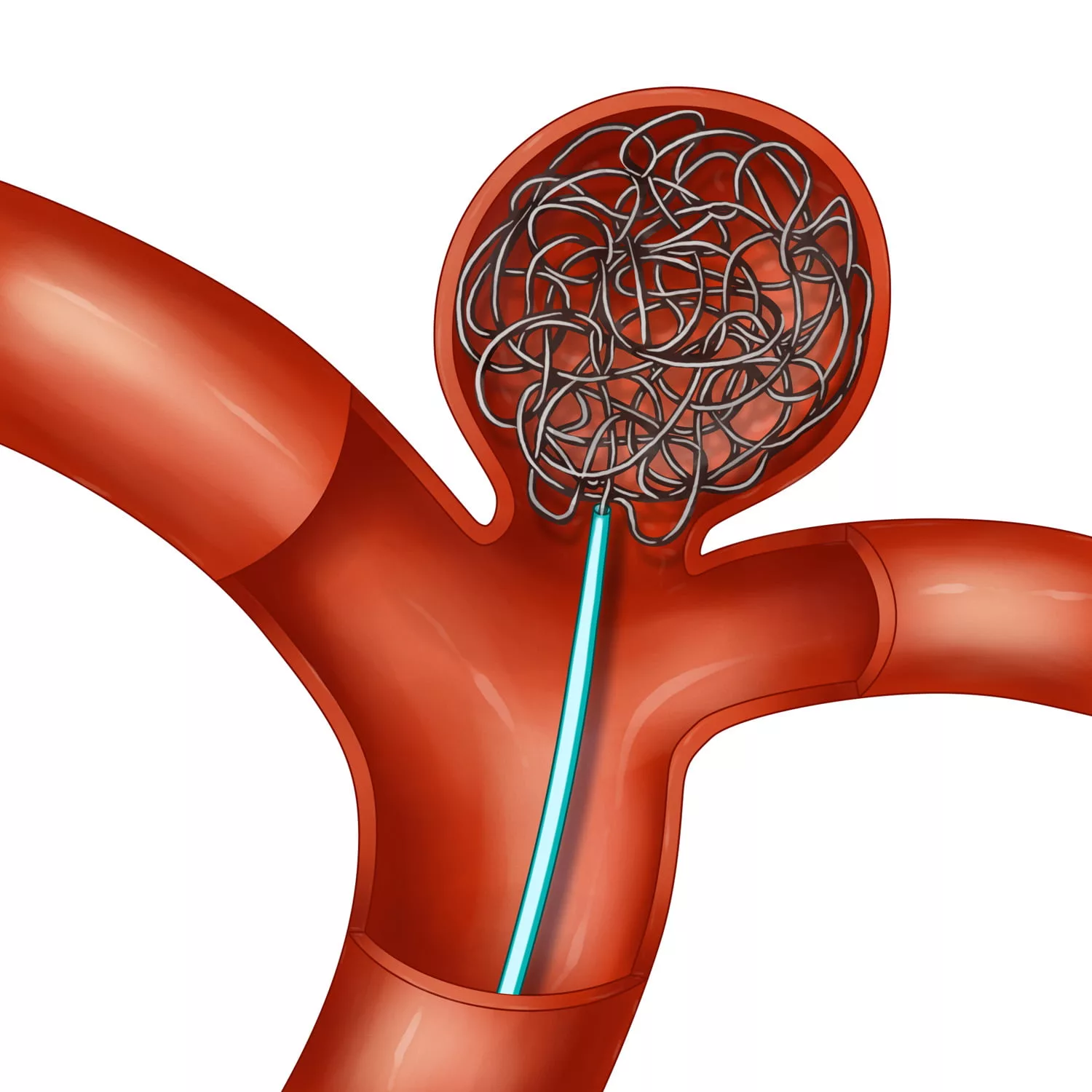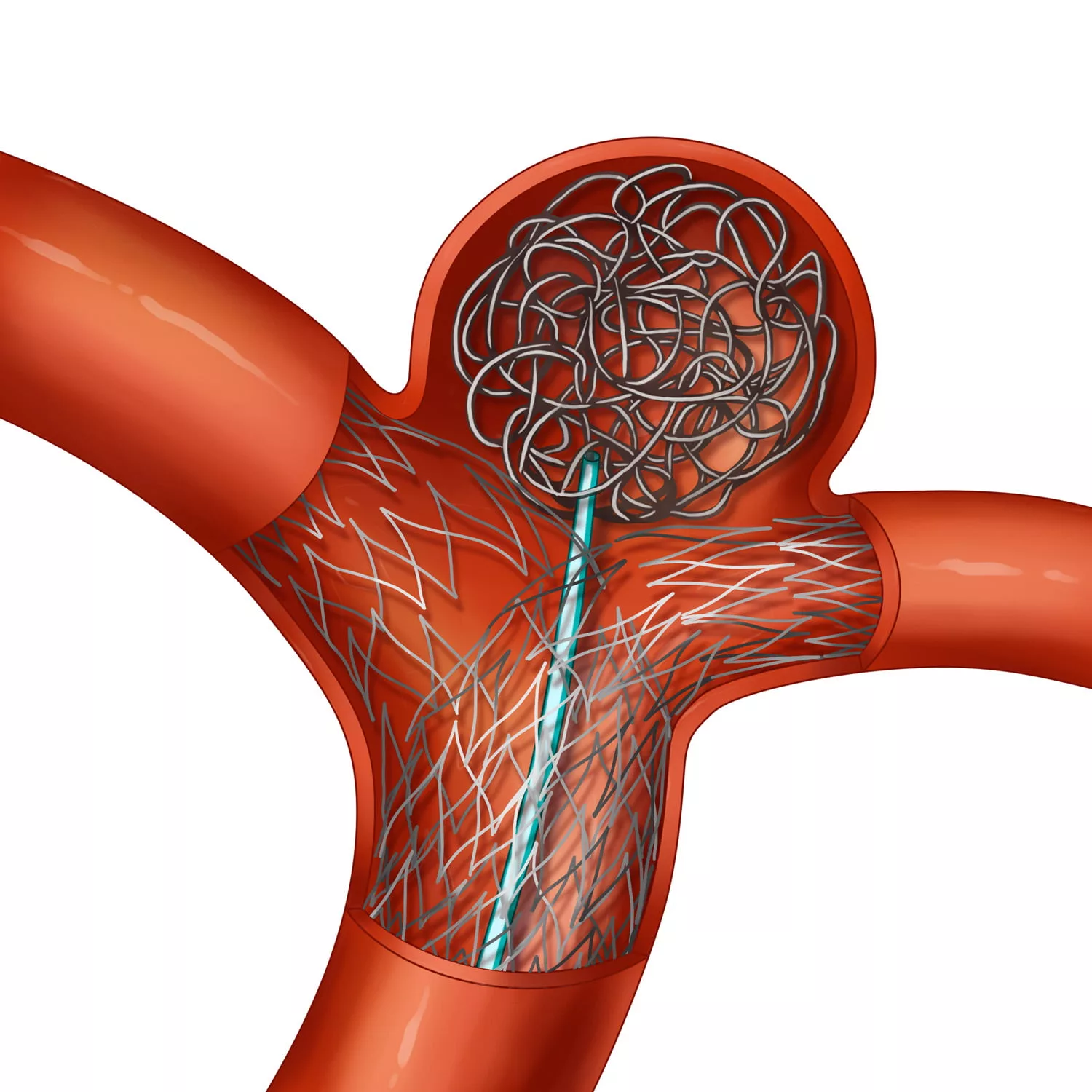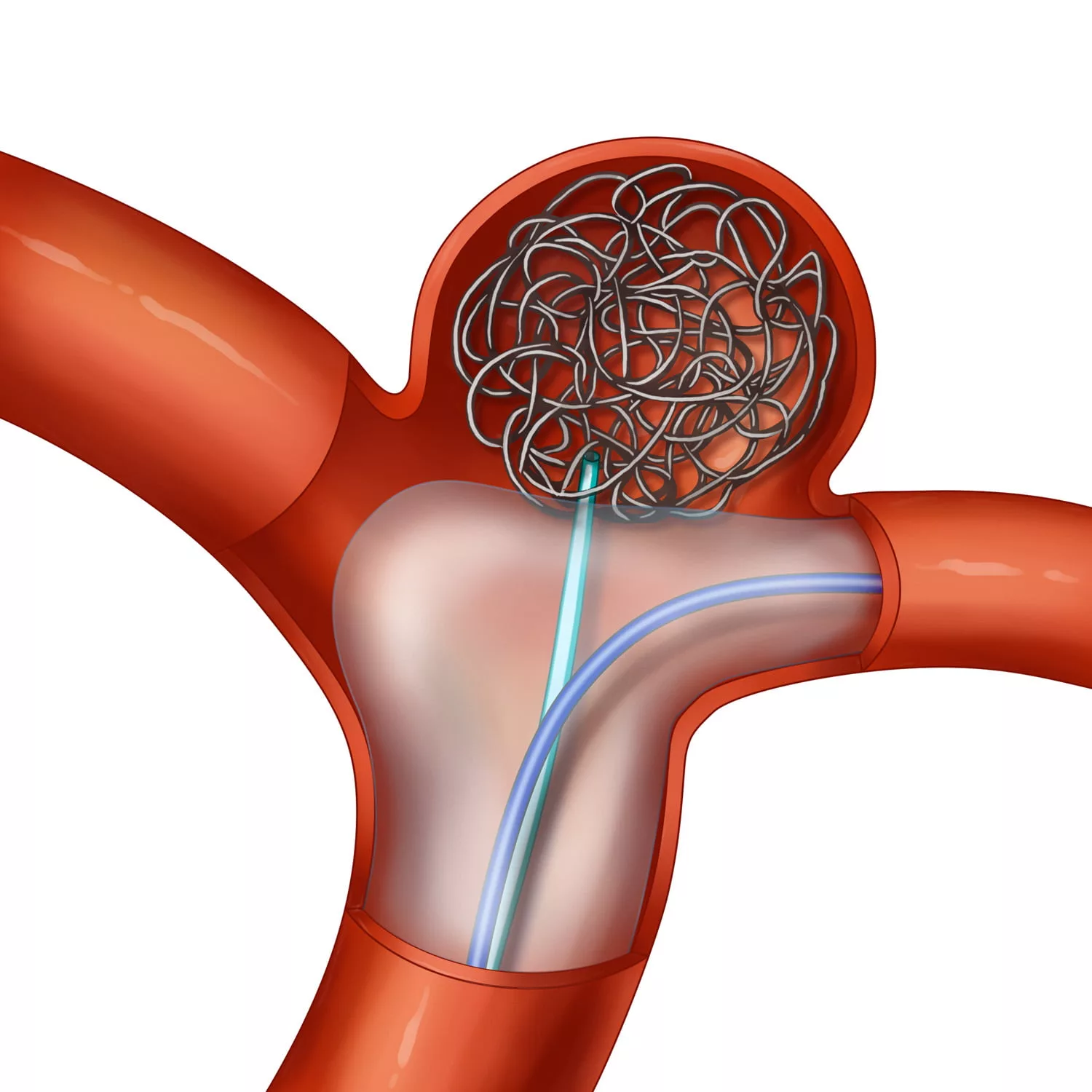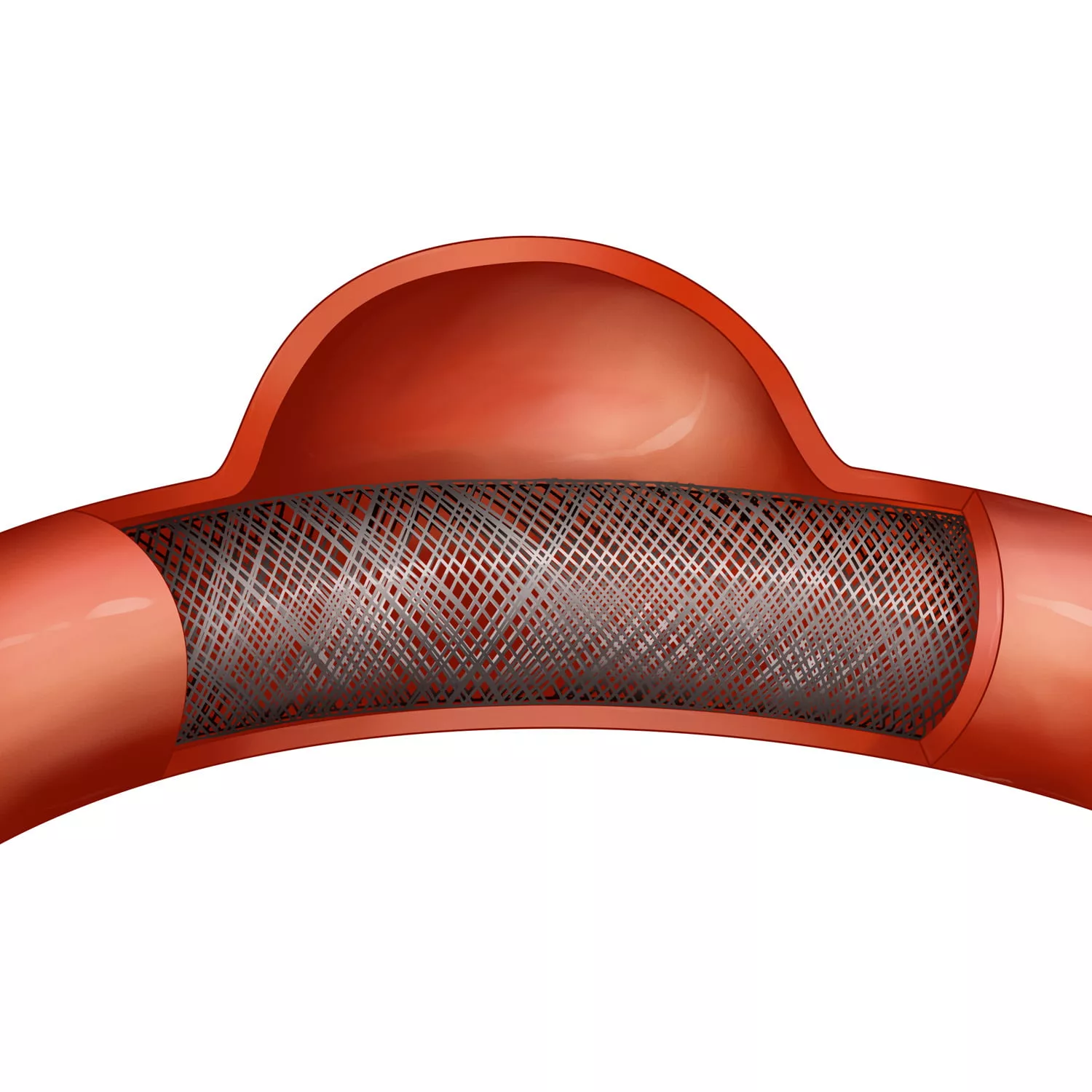Cerebral Aneurysm
What is it?
A cerebral aneurysm is a weak area in the wall of an artery, which is a blood vessel in the brain. This weak area usually causes a bulge in the wall of the blood vessel. The pressure from blood moving inside the artery, against this weak spot, can cause it to enlarge. Eventually the aneurysm can burst, or rupture. If this happens, emergency treatment is required. More often, the aneurysm can be found during a scan of the brain, such as an MRI scan or a CT scan. If an aneurysm is found in this way, treatment might be recommended to prevent it from rupturing in the future.
How did I get it?
There is no one single cause of cerebral aneurysms. We know that there are certain risk factors which make an aneurysm likely to grow and rupture. The most important two of these are smoking and increased blood pressure. If you have a cerebral aneurysm, it is very important not to smoke and to have your blood pressure controlled. There are other risk factors which the patient cannot change. There may be some links to genetics – our team is doing some research on this area. For example, aneurysms tend to be more common in women, in people from certain parts of the world and in people with genetic diseases.
How would I know I have an aneurysm?
Most people with cerebral aneurysms do not know they have one. They rarely cause any symptoms unless they burst (ie rupture). Sometimes, very large aneurysms can compress other areas of the brain and cause symptoms such as loss of balance or problems with vision.
How would I know if the aneurysm ruptures?
A ruptured aneurysm in the brain is a medical emergency. It causes a bleed, or haemorrhage, in the space around the brain that is called the subarachnoid space. This bleed is called a ‘subarachnoid haemorrhage’. It usually causes a sudden, very severe (thunderclap) headache. Patients often call it the worst headache of their life. Other symptoms which can occur include suddenly feeling sick, having sensitivity to light or a stiff neck, seizures or loss of consciousness. If these occur, patients should dial 911 immediately. If you or a family member have these symptoms and have a known brain aneurysm, it is very important to inform the emergency staff as quickly as possible. The Toronto Western Hospital Neurovascular clinic provides 24h 7/7 oncall to assess emergent cases.
Does every aneurysm need to be treated?
No. In fact, most people who have small cerebral aneurysms never know they have one. They might only find out they have one on a brain scan that is done for other reasons. If we find an aneurysm in this way, you can be referred to our Neurovascular Clinic to decide what to do next. This is a decision we make together, with you, the patient. Treating an aneurysm carries risk. In many cases, this risk is relatively small, but it is risk nonetheless, and the risk is never zero. The main risk associated with every aneurysm treatment is of damage to the brain, or even a stroke.
For this reason, we assess each patient individually. We consider many factors, including the appearances of the aneurysm, if another aneurysm has bled before, your wishes regarding treatment, family history of aneurysms, underlying medical conditions and many more. If treatment is not recommended at this stage, that does not mean we do nothing. Often, we will plan a series of scans over a few years to make sure that the aneurysm remains the same size. We will also educate you on the symptoms of aneurysm growth or even rupture and provide you with our contact details if there is any concern or change in symptoms. We may recommend changes in your life style. If we decide to recommend treatment, the next step is to decide what kind of treatment is best.
What are the ways in which an aneurysm can be treated?
There are two main ways in which a cerebral aneurysm can be treated. Each has its advantages and disadvantages, and sometimes an aneurysm might be particularly suited to one method or the other. For this reason, we discuss all of our patients with cerebral aneurysms together as a team of physiicans specialized in differnet ways of treatment: thus neurosurgeons and interventional neuroradiologists are part of the team looking after you. We then come up with a group consensus as to the best way we believe as a team to treat the aneurysm.
Surgery
This is performed under general anaesthesia, and you will usually be in the hospital for a few days afterwards. A small incision is made in your scalp behind the hairline, or sometimes just above your eyebrow. Using a high magnification microscope, we can place a “clip” across the neck of the aneurysm to exclude it from the normal blood flow – this is called a microsurgical “clipping” procedure. Our team is using and developing minimally invasive techniques including endoscopy to treat cerebral aneurysms. Following the procedure, we do a CT scan to make sure the aneurysm is completely closed off or occluded.
Endovascular Treatment
Another, less invasive, way of treating a cerebral aneurysm is from going through the inside of the blood vessels. This is also performed under a general anaesthetic. We can go in through the blood vessels from the leg or arm, the same way we do when you are getting an angiogram of your heart or your brain. We can then navigate tiny tubes called “catheters” to the blood vessel close to the aneurysm. We may close off the aneurysm in different ways. The most common one is by placing very tiny strips of metal called “coils” gently inside the aneurysm. By filling the aneurysm up with these, no blood can get inside, and the aneurysm eventually closes off. This procedure is called “coiling” of the aneurysm. Sometimes we can treat it by placing a metal tube called a “stent” across the neck of the aneurysm. This is called a “stenting” procedure. Finally, we can sometimes place a certain type of stent across the neck of the aneurysm which diverts blood away from the aneurysm. This eventually allows the aneurysm to close off. These special types of stents are called “flow diverters”.
Following the treatment, the patient usually goes home the next day. We then do an MRI scan a few months later to make sure the aneurysm has been completely closed off. After this, we will see the patient in the out-patient clinic a few times over the next few months.


